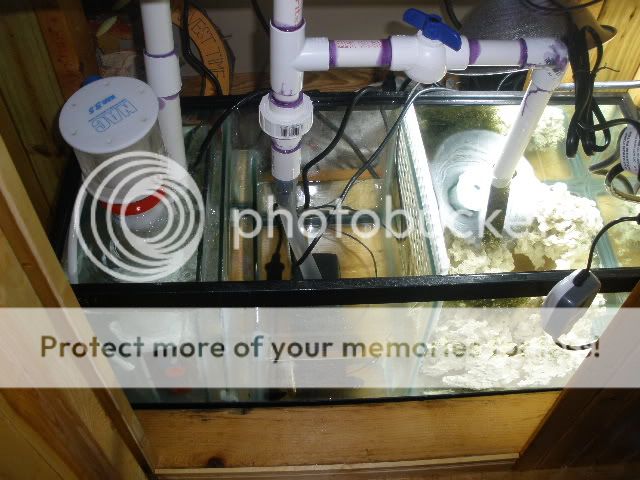Essentially a sump is a filter. At it's most basic level it is divided into 3 chambers. The first being the inlet side, the secound a refugium and the third the return. The first chamber (in the case of marine setups) usually contains filter media. The secound chamber or refugium usually has a light above it and has a deep sand bed to allow macro algae and plankton to grow. The macro algae feeds of off nitrates and phosphates in the water thereby helping to keep water quality spot on. The macro algae is then harvested periodically which affectively physically removes NO3 and PO3 from the system.The third chamber is the return which houses the return pump to the tank.
There is no reason though that this system cannot be adapted to FW. The first chamber should remain the same. Use ceramic rings for the filter media. The water then passes beneath the first divider and then immediately over ( a 1.5 inch gap between) another divider into the secound chamber. The secound chamber can be used as a refugium by letting nuisance hair algae and hardy plants grow under a bright light. A good tip when running this is to have the light on when the main tank light is off. This will then help keep Ph and oxygen levels stable as the plants/algae in the refugium absorb carbon dioxide and produce oxygen when the plants in the tank absorb oxygen and produce carbon dioxide and visa versa. The water through this chamber should move quite slowly to allow the refuguim to do its job. The water then passes over another divider into the third chamber. The third chamber is generally recommended to be big enough to house the return pump and heaters (and other pumps for other equipment in the case of marine setups).
The whole sump is gravity feed via a weir in the main tank that contains a drain. The weir must have a secoundry 'wall' fitted inside that only allows water to pass over the top of it. This is very important as without it the main tank will drain if there is a power cut to the tank. The height of this 'wall' is also very important as it will determine the level of water in the tank. Too high and the water level will touch any bracing that is in the tank, too low and you'll see the water level below the hood or trim. The drain from the tank can make a lot of noise that will drive you up the wall. You can get around this problem by fitting a Durso standpipe. You should also put a syphon break into the return hose just below the water level. This is just a hole cut or drilled into the hose. If the power shuts off air is sucked into this hole thereby stopping the tank from syphoning and emptying. The water level in the sump should allow for any water syphoned into it in till the syphon break stops it.
When deciding what size sump to use, try to allow some free space at the side to allow for an external filter to be added to the system. This can then be used for carbon remover, ammonia remover, phosphate remover, polishing pads and other filter media that you may feel you want to use. Just place the inlet into the third chamber and the outlet run back to the first chamber.
The great advantage with a sump is that water changes can be done without lowering the tank water level, medication can be mixed and added, no equipment is visible in the tank and the system will run on a greater volume of water. The more water in the system the more stable it is.
This doesn't go into the practical/diy/building side of making a weir and sump, but i hope it has gone some way to helping you out.
Good luck



